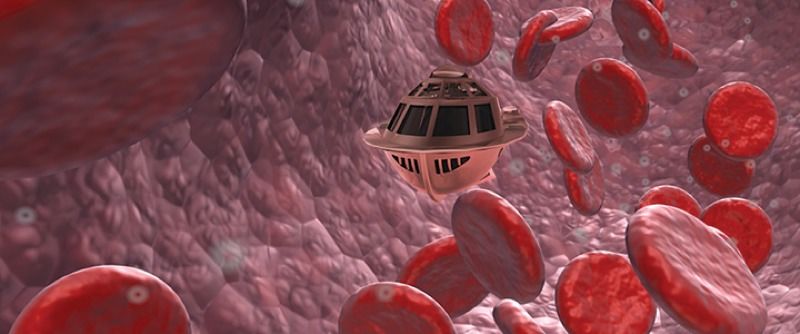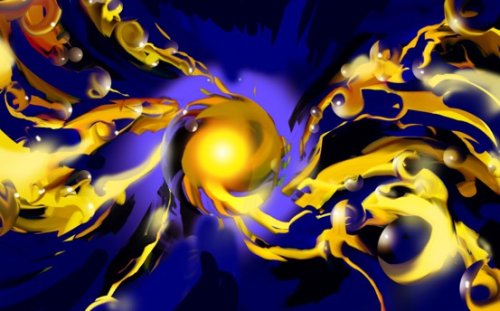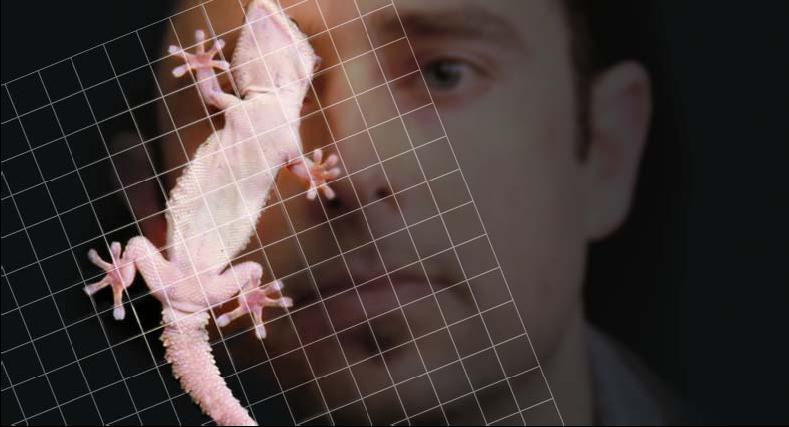Prospective nano motors can accumulate and use light energy for movement

One of the cornerstones in the development of promising nanodevices for their further use in medicine, technology, biotechnology until the last moment was the creation of nano-motors, or rather, an energy-efficient power source for nano-motors. Scientists at the University of Cambridge reported to the scientific community about some tangible successes in the creation of such nano-motors .
Experts called their engines ANT (actuating nano transduser), and to control them they would not need the presence of a miniature pilot, as was the case in many ways a prophetic sci-fi film. Fantastic journeyReleased back in 1966. Created in the Cambridge laboratory, the nano-engines will be remotely controlled and, like microscopic ants, will be able to generate energy and carry the desired payload, exceeding in size the weight of their own "body".
How it works
The principle of operation of the ANT nano-motor is in many respects similar to the principle of the spring mechanism. The basis of the engine is a set of gold nanoparticles interconnected in a specific configuration by a gel-like substance based on a polymer that is sensitive to temperature changes. By means of directional laser radiation, the nanoparticles are heated, which leads to an increase in the temperature of the entire structure and, as a consequence, the removal of water molecules from the polymer. The process proceeds very quickly and is accompanied by the compression of the “body” of the nanowire, like a mechanical spring. Thus, the absorbed energy of light is accumulated in the form of the elastic mechanical energy of the compressed “nanopipe”.
Turning off the light source (in our case of a laser) leads to an equally rapid cooling of the ANT body of the nano-motor and absorption of water from the environment. As a result, the reverse process occurs - the gel-like polymer almost instantly increases in volume, releasing the accumulated energy of the light quanta. Gold nanoparticles, acting as a catalyst, can increase the intensity of the process and the absolute value of the generated motor force. Again, it is critically important that the expansion process of the nano-motor (as well as its compression) occurs in a fraction of a second and is similar to a microexplosion.

Van der Waltz forces acting at the level of substance molecules have the most direct influence on the efficiency of the nanomechanism. Practically not tangible at the macro level in everyday life, at the level of nanoscale their influence is very, very weighty. It is thanks to the forces of Van der Waals lizards geckos acquire an amazing ability to rapidly move along the walls and ceiling of polished glass, in contact with the surface of hundreds of thousands of miniature hairs covering their limbs.

The ANT nano-motors, created by scientists, accumulate the energy of the light flux, transforming most of it into the energy of attraction of nanoparticles from a heavy metal and molecules of a gel-like polymer. And here it is very important that the energy formed at the moment of breaking of the formed bonds turns out to be several times higher than that which would have been accumulated due to one-time compression of the material, which does not have the ability for continuous accumulation of energy during a certain time interval. It is due to this difference that the useful work necessary for the fulfillment of the task is accomplished.
Existing development limitations
Unfortunately, having found a way to effectively accumulate and release energy at the level of the nanomechanism, scientists have not yet found a way to focus the energy flow in one particular direction, which is necessary for purposeful movement. Today, this is the last obstacle that separates the scientific community from the creation of controlled nano motors, capable of setting in motion tiny nanorobots, and by and large - of using the latter as vehicles for drug delivery, remotely controlled instruments during microsurgical operations, etc.
At the same time, the results obtained allow scientists at Cambridge University, using ANT-nano-motors, to begin today to develop controlled pumps and valves involved in microflow liquid chips that will be used in on-chip laboratories, biosensors and advanced diagnostic equipment of the new generation.
A source
That's all, with you there was a simple service for choosing sophisticated Dronk.Ru equipment . Do not forget to subscribe to our blog , there will be many more interesting ... Sponsored by LetyShops cashback service . Return money for any purchases on the Internet. Read more about what a cashback service is in our article. We choose a cashback service for the 6th anniversary of Aliexpress.

